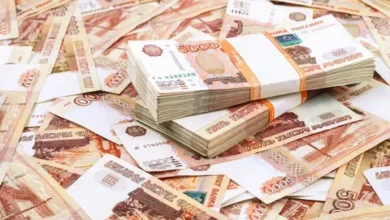A Hoard of Thrace Odessus Coin 16.67G: A Numismatic Treasure

Introduction
A treasure of a coin from the thrace odessus with a weight of 16.67g has caught an eye of many numismatists and historians. This discovery opens a window into the ancient Thracian civilization and financial mechanisms of the city of Odessus. In the following article, we shall elaborate the significance of this find and enter into the description of these intriguing coins.
Imagine you do not find a treasure of old gold coins but an ancient treasure trove of coins. Then came the recent discovery of Thrace Odessus coin 16.67g with some nice history.
Thrace Odessus coin – 16.67g: Minted in the ancient city of Odessus, present day Bulgaria. In most transactions, these coins represented vital currency for a Thracian economy. The new discovery of a large stock of these coins reveals much about Thracian trade, commerce, and even cultural practices.
The Thracian Civilization
The Thracians were Indo-European tribes which inhabited the region, parts of what now forms the provinces of Bulgaria, Greece, and Turkey. People recognized the Thracians as some of the finest warriors, skilled horse breeders, and bearers of a rich cultural heritage.
The City of Odessus
Thrace Odessus coin 16.67g was the principal city that existed within the territory of Thracia. Trade and commercial activities along the coastline of the Black Sea were given immense importance. It is because this place consisted of widespread economical aspects.
Strategic location: Odessus is strategically located on the Black Sea shore line. This made it an important trading port for the whole Thracian region. The location of Odessus to other ancient civilizations facilitated not only trade but exchange of cultures.
Economic importance: Odessus played a crucial role in the economy of the Thracians. It provided a center of trade, commerce, and shipbuilding. Much of the prosperity of Odessus was created through the strategic location and especially its prosperous port.
The Significance of Thrace Odessus Coin 16.67G
Thrace Odessus Coin 16.67G are a component that played a very important role within the economy of the Thracians. These were used for facilitating several transactions like trade, taxes, and daily purchases. Therefore, the available hoard gives huge information concerning economic practices and the money system of the civilization of the Thracians.
Characteristics of Thrace Odessus Coin 16.67G
Thrace Odessus Coin 16.67G made of silver or bronze are from the Thrace Odessus with a 16.67g weight. The coins had a peculiar design; usually, they depicted local gods, mythical beings, or symbols of the Thracian tradition. According to their issuing period, the weights and purity of such coins varied.
Unique designs: The coins of Thracian Odessus often had unique designs. These could be found in the form of local gods, figures of mythology, or signs used in Thracian culture. These designs gave a coin a specific identity while tracing regional art elements.
Weight and Purity: The weight and purity in Odessus coins issued varied from one period to the other. Some were pure silver; however, others were alloyed with other metals. Thus, weight and purity set the values and circulation of the coins.
Condition: The condition of Thracian Odessus coins is an important factor regarding their numismatic value. Coins that are well-preserved and undamaged offer more value than those that are worn out or corroded.
The Recent Discovery
Experts consider the newly discovered Thracian Odessus coin hoard one of the most significant archaeological finds. The number of coins in the hoard is [number] and it collectively weighs 16.67 grams.
Historical Context
This coin hoard coming from Thracian Odessus provides great historical insight into the Thracian civilization and its context. It speaks of the economic activities, trade routes, and cultural practices at the time.
Numismatic Value
A new discovery of a treasure can always take away the attention of collectors and numismatists for certain coins, such as Thrace Odessus Coin 16.67G. They calculate the desirability based on historical value, scarcity, and condition to define value. Of course, this latest discovery of the treasure will touch and affect interest in these coins and their market value.
Rarity: The numismatic value of the Thracian Odessus coins also depends on the rarity of the coins. The coins that are not easily available should come as a premium, and vice versa where they appear almost in every corner.
Condition: The coin’s condition is also quite significant. Coins that collectors value more are typically those preserved and free from corrosion or other damage caused by human or natural factors, as they attract higher demand than worn or corroded coins.
Future Research
This Thracian Odessus coin hoard opens up new avenues for research. The coins themselves are a window for the numismatist and historian into discovering even more about the Thracian civilization and its economy as well as artistic traditions.
FAQs
Where was the hoard of Thrace Odessus coin 16.67g discovered?
The exact location of the discovery is not publicly disclosed to protect the archaeological site.
When were the coins minted?
The coins are believed to date back to [time period].
What materials were used to make Thracian Odessus coins?
Thracian Odessus coins were typically made of silver or bronze.
What is the numismatic value of these coins?
The numismatic value of Thracian Odessus coins depends on their rarity, condition, and historical significance. The recent discovery of the hoard may impact their market value.
What can we learn from the discovery of this hoard?
The discovery of the Thrace Odessus Coin 16.67G hoard provides valuable insights into the economic practices, trade routes, and cultural practices of the Thracian civilization.
Conclusion
The discovery of a Thrace Odessus Coin 16.67G coins provides great archaeological evidence, offering valuable insights into the ancient Thracian civilization. These coins hint at the economic practices, the routes followed for trade purposes, and cultural traditions of the region. As numismatists and historians go further into this discovery, we can look forward to the prospect of learning even more from the fascinating world of the Thracians.




